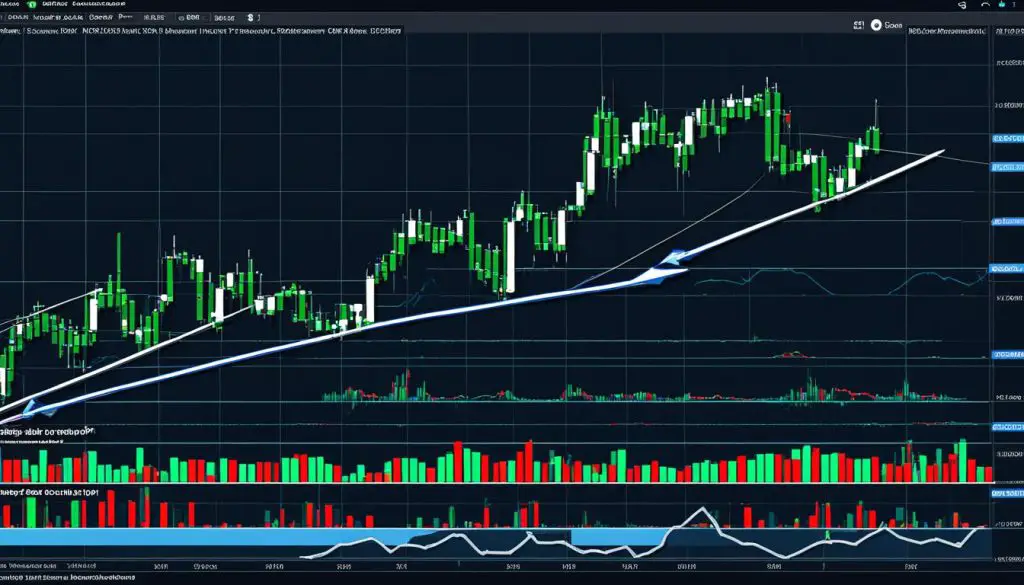Risk Reward Ratio Trading: Key to Success
In the world of trading, risk reward ratio trading is a pivotal concept that can significantly influence the outcome of your investment decisions. This ratio helps traders understand the potential return on an investment compared to the amount of risk they are taking. The best risk reward ratio for one trader may differ from another, depending on their risk tolerance and trading strategy. However, mastering this concept is crucial for anyone looking to make informed and successful trades.
What is the Risk Reward Ratio and Why is it Important?
The risk reward ratio measures the potential profit for every dollar risked. It is a critical component of any trading strategy, offering insights into whether a trade is worth taking. A favorable risk reward ratio is often seen as the cornerstone of successful trading practices, as it aims to minimize losses and maximize gains. Understanding and applying the risk reward formula can greatly improve your trading outcomes.
Calculating the Risk Reward Ratio: A Step-by-Step Guide
Calculating the risk reward ratio involves identifying potential risks and rewards before entering a trade. This can be simplified using a risk reward ratio calculator, a tool designed to help traders assess the viability of their trades. Here’s a basic outline for calculation:
- Identifying Potential Risks: Determine the amount you’re willing to lose on a trade.
- Estimating Potential Rewards: Estimate the potential profit of the trade.
The formula for the risk reward ratio is the potential reward divided by the potential risk. For example, if you stand to gain $200 on a trade with a potential loss of $100, your risk reward ratio would be 2:1, indicating that the reward is twice the risk.
The Role of Risk Reward Ratio in Successful Trading Strategies
Incorporating the average risk reward ratio and the inverse risk reward ratio into your trading strategy can provide a clearer picture of potential trade outcomes. By consistently applying risk reward analysis, traders can filter out less profitable trades and focus on those with a higher probability of success. This disciplined approach can lead to more consistent gains and better risk management.
Implementing Risk Reward Ratio Trading in Your Strategy
Integrating risk reward ratio trading into your investment strategy is not just about calculating numbers; it’s about creating a comprehensive approach to trading that aligns with your financial goals and risk tolerance. The right strategy can significantly enhance your trading performance by guiding you on when to enter and exit trades based on calculated risks and potential rewards.
Setting Up Your Trading Plan with Risk Reward Considerations
A well-thought-out trading plan incorporates the risk reward ratio as its core principle. Start by defining clear entry and exit criteria for your trades, considering the risk reward ratio that aligns with your trading style. Whether you’re a conservative trader looking for a high risk reward ratio or an aggressive trader comfortable with a lower ratio, your plan should reflect your objectives and include risk management tactics to protect your capital.
Risk Management Techniques That Enhance Your risk reward Ratio
Effective risk management is crucial in maximizing the best risk reward ratio. Techniques such as setting stop-loss orders can help manage risk by specifying a price at which a losing trade will be closed out. This protects traders from significant losses and ensures that the risk reward ratio calculator’s outcomes are adhered to. Additionally, understanding position sizing can further refine your risk management strategy, ensuring that you’re not overexposed on any single trade.
- Using Stop-Loss Orders to Manage Risk: Implementing stop-loss orders is a straightforward way to limit potential losses. By determining the maximum amount you’re willing to lose on a trade, you ensure that even if the market moves against you, your losses are controlled.
- The Importance of Position Sizing in Risk Management: Position sizing is about determining how much of your capital to allocate to a single trade. It’s a critical factor in risk management, helping to avoid disproportionate losses and maintain a healthy average risk reward ratio across your portfolio.
Tools and Software for Monitoring Risk Reward Ratios
Leveraging technology can provide a competitive edge in maintaining optimal risk reward ratios. Various tools and software are available to traders, designed to automatically calculate the risk reward ratio for potential trades, track performance, and alert traders to changes in market conditions that might affect their risk reward strategy. Utilizing these tools can simplify the decision-making process and allow for more precise, data-driven trading strategies.
The Psychological Aspects of Risk-Reward Ratio Trading
Trading is not just a test of strategy and analysis but also a psychological challenge. Understanding the psychological aspects of risk-reward ratio trading is crucial for maintaining discipline and making rational decisions in the heat of the market. Emotional control and confidence are byproducts of a well-calculated approach to risk and reward, highlighting the importance of this ratio in successful trading.
Overcoming Fear and Greed: Emotional Discipline in Trading
Fear and greed are two of the most potent emotions that traders must manage. The risk-reward ratio plays a pivotal role in overcoming these emotional hurdles. By setting predefined risk-reward parameters, traders can make decisions based on logic rather than emotion. This discipline helps in mitigating the fear of loss and the greed for more profits, leading to more consistent and objective trading practices.
- Embracing Risk Management: Effective risk management strategies, underscored by the risk reward ratio calculator, can alleviate the fear that comes with potential losses. Knowing that you have a plan in place to limit losses can bolster your trading confidence.
- Setting Realistic Expectations: Understanding the average risk reward ratio helps set realistic expectations for trade outcomes. It’s important to recognize that not every trade will be a winner and that losses are part of the trading process.
Building Confidence Through Risk-Reward Management
Confidence in trading comes from experience and a solid understanding of your trading strategy, including how you manage the risk-reward ratio. Implementing a strategy that frequently results in favorable outcomes can reinforce confidence, encouraging adherence to your trading plan even in volatile markets.
- Learning from Each Trade: Whether a trade is successful or not, there’s always a lesson to be learned. Analyzing the outcomes in the context of the risk-reward ratio can provide valuable insights into what works and what doesn’t, contributing to a trader’s growth and confidence.
- Continuous Improvement: The trading landscape is always evolving, and so should your approach to managing the risk-reward ratio. Regularly reviewing and adjusting your strategy based on past performance and future expectations can help in fine-tuning your decision-making process and improving overall confidence.
Advanced Concepts in Risk-Reward Ratio Trading
To elevate your trading strategy, it’s essential to dive into more advanced concepts surrounding the risk-reward ratio. These advanced strategies can offer deeper insights into market movements and enhance your ability to make informed decisions. Leveraging technical analysis and understanding the nuances of leverage are two areas that can significantly impact your risk-reward outcomes.
Leveraging Technical Analysis to Improve Risk-Reward Outcomes
Technical analysis is a powerful tool for traders aiming to improve their risk-reward ratio. By analyzing historical price movements and market trends, traders can identify potential entry and exit points that offer the most favorable risk-reward scenarios.
- Identifying Support and Resistance Levels: These levels can indicate where the price of an asset might experience a reversal or continuation, helping traders set strategic entry and exit points based on their risk-reward criteria.
- Using Technical Indicators: Indicators like moving averages, RSI (Relative Strength Index), and MACD (Moving Average Convergence Divergence) can provide signals on market momentum and potential reversals, aiding in decision-making for better risk-reward opportunities.
The Impact of Leverage on Risk-Reward Ratios
Leverage can amplify both the potential returns and risks of trading positions, affecting the risk-reward ratio. Understanding how to use leverage effectively is crucial for managing the increased risk it introduces.
- Understanding Leverage Risks: While leverage can increase potential profits, it also magnifies potential losses. Traders need to be aware of the inverse risk reward ratio that leverage can introduce, especially in volatile markets.
- Strategies for Managing Leverage Effectively: Proper leverage management involves choosing the right level of leverage for your risk tolerance, using stop-loss orders to limit potential losses, and closely monitoring open positions to adjust leverage as market conditions change.
Expert Insights and Case Studies on Risk-Reward Ratio Trading
Gleaning insights from seasoned traders and analyzing real-world case studies can provide invaluable lessons on the application of the risk-reward ratio in trading. These narratives not only illustrate the concept’s practicality but also underscore its significance in achieving trading success.
Interviews with Professional Traders on Risk-Reward Strategies
Speaking with professional traders reveals a consensus: a disciplined approach to the risk-reward ratio is fundamental. These experts emphasize the importance of consistency in applying risk-reward criteria to every trade, highlighting that the best risk reward ratio often lies in a trader’s ability to stick to their predefined parameters, regardless of market conditions.
Adapting Strategies to Market Changes: Successful traders adapt their risk-reward strategies in response to market volatility, demonstrating the fluid nature of trading. These adaptations are informed by experience and a deep understanding of market dynamics, reinforcing the value of a flexible yet disciplined approach.
Analyzing Historical Trades: Lessons Learned
Case studies of historical trades offer concrete examples of the risk-reward ratio’s impact on trading outcomes. These analyses can demonstrate how different risk-reward setups have led to both spectacular successes and cautionary tales of losses, providing a rich learning ground for traders at all levels.
- The Role of Analysis and Intuition: Beyond the numbers, these case studies often reveal that a combination of technical analysis and trader intuition plays a crucial role in navigating the intricacies of risk-reward decisions.
- Learning from Mistakes: Perhaps most importantly, examining trades that didn’t pan out as expected can offer critical insights into risk management, underscoring the importance of evaluating and adjusting one’s approach to risk-reward ratio trading continually.
Conclusion: Mastering Risk Reward Ratio Trading
The journey through understanding and applying the risk-reward ratio in trading underscores its critical role in shaping trading strategies that are both profitable and sustainable. Mastering this concept is a fundamental step toward achieving long-term success in the financial markets.
Key Takeaways on Risk-Reward Ratio Trading
Discipline and Consistency: The cornerstone of utilizing the risk-reward ratio effectively lies in the disciplined application of predefined trading parameters and consistency across all trades.
Risk Management: Effective risk management, facilitated by a clear understanding of the risk reward ratio calculator and reward to risk ratio formula, is essential for protecting capital and maximizing potential returns.
Adaptability: The ability to adapt risk-reward strategies in response to changing market conditions is a hallmark of experienced traders, demonstrating the importance of flexibility alongside discipline.





